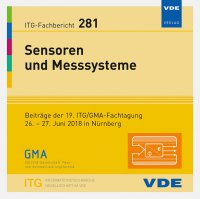Speckle-Visualization of cytotoxic induced cellular displacements
Konferenz: Sensoren und Messsysteme - 19. ITG/GMA-Fachtagung
26.06.2018 - 27.06.2018 in Nürnberg, Deutschland
Tagungsband: Sensoren und Messsysteme
Seiten: 5Sprache: EnglischTyp: PDF
Persönliche VDE-Mitglieder erhalten auf diesen Artikel 10% Rabatt
Autoren:
Gottschalk, Josefine J.; Krumnow, Erik; Lietzau, Kai.-H.; Foitzik, Andreas H. (Technical University Wildau, Institute for Materials, Development and Production, Hochschulring 1, 15745 Wildau, Germany)
Richetta, Maria (Department of Industrial Engineering, University of Rome „Tor Vergata“, 00133 Rome, Italy)
Inhalt:
The institute of medicine (US) Committee on Quality of Health Care in America defined that health care should be safe, effective, patient-centered, timely, efficient and equitable. In order to ensure this, scientists analyses the complex development of cancer and novel strategies for a treatment. One common approach is the chemotherapy which is defined as a treatment of cancer using specific chemical agents or drugs that are selectively destructive to malignant cells and tissues. As already mentioned, every kind of cancer and patient is unique which means that an almost successful treatment could be ineffective for the next patient. In most cases, this effect is caused by a chemical resistance against the applied anticancer drug. The formation or increase of unwanted side effects which weaken the patient unnecessarily can result in additional consequences. As a result, a great variety of anticancer drugs nowadays have been primarily evaluated utilizing in vitro or in vivo model. Usually, the efficacy of such complex pharmaceuticals is verified either by minimal inhibitory concentration or with optical microbiological detection methods. However, such an interaction between cells and drugs should only be regarded as an approximation since it is not directly tested on human cells or still needs to be modified for the according detection method. Thus, the samples are often modified and no more natural. A direct adaption of these obtained results are therefore often not possible and not even safe or effective for the patient. One promising approach which could solve these previous mentioned demands, could be the electronic speckle pattern interferometry (ESPI). Alternations of the cells are detected by ESPI, providing false-phase images which are visually evaluated with a color scale. These results are compared regarding the applied drugs, providing better insight on the drug cell-surface interactions. With the help of a false-phase image and the linked color scale as a result of the ESPI the change of the cell during a given time frame are calculated. Afterwards the results to each applied drug are compared and the different effect on the cell is visible.


